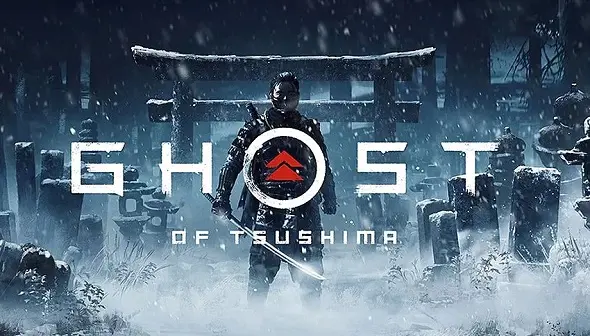20 Minutes of Ghost of Yōtei Gameplay Unveiled at State of Play

In a thrilling 20-minute deep dive revealed during yesterday's dedicated State of Play presentation, Ghost of Yōtei took center stage with an extensive look at its gameplay, combat systems, open world, and cinematic flair. Developed by a team that clearly draws inspiration from titles like Ghost of Tsushima, Ghost of Yōtei positions itself as a bold evolution of the samurai action-adventure genre, with notable changes in tone, setting, and mechanics.
Set in early 17th-century northern Japan, specifically the snowy region of Ezo (modern-day Hokkaidō), Ghost of Yōtei introduces players to Atsu, a ronin of Ainu descent, who is driven by vengeance against a group known as the Yōtei Six. The game's open-world structure emphasizes freedom and exploration, allowing players to pursue missions in any order. From vast frozen plains to dense forests and mountainous terrain, the scenarios in the game are dynamic, featuring weather changes like snowstorms and auroras that directly impact visibility and traversal.
The combat system looks significantly expanded compared to similar titles. Atsu can wield a diverse range of weapons including dual katanas, long odachi blades, kusarigama, spears, and even early firearms like the tanegashima. One of the standout moments in the demo showed Atsu facing off against a boss who switches weapons mid-fight, forcing players to adapt on the fly. This shift toward more varied and reactive encounters promises greater depth than seen in its spiritual predecessors.
Visually, the game offers several cinematic modes. While the popular Kurosawa Mode (a black-and-white filter inspired by the famed director) returns, two new options are being introduced: "Miike Mode," delivering a bloodier and more stylized aesthetic, and "Watanabe Mode," which features a relaxed vibe accompanied by lo-fi beats reminiscent of Cowboy Bebop’s jazzy soundtrack. These modes allow players to customize their experience not just through gameplay, but in how they emotionally connect with the world.
Beyond the core story, Ghost of Yōtei also features an array of side activities, including bounty hunting, wildlife encounters, onsen bathing, cooking at campfires, and classic mini-games like bamboo cutting. The addition of a loyal wolf companion who assists in combat and exploration adds yet another layer to the game's immersive design.
How does it compare to Ghost of Tsushima?
Unsurprisingly, the game is drawing direct comparisons to Ghost of Tsushima, a critically acclaimed PlayStation exclusive from 2020. While both games center around lone warriors in feudal Japan, the differences are striking. Ghost of Yōtei leans heavily into darker themes, presenting Atsu not as a symbol of honor, but as an avenger with personal demons.
Its environments, too, diverge sharply: Tsushima's warm, windswept islands contrast with Yōtei's icy, desolate wilderness. The inclusion of more fantastical and cinematic elements, such as surreal lighting and stylized presentation modes, marks a clear step toward a more artistic, almost dreamlike interpretation of the genre. Gameplay refinements are also front and center. Ghost of Yōtei introduces new AI systems, more fluid movement animations, and deeper customization options. Whereas Ghost ofTsushima focused on the internal struggle between honor and necessity, Ghost of Yōtei seems more concerned with raw survival, cultural identity, and personal vengeance.
Scheduled for release on October 2, 2025, exclusively for PlayStation 5, Ghost of Yōtei is shaping up to be one of the most anticipated titles of the year. We highlt recommend you to use our comparator if you want to find the best discounts for Ghost of Yōtei.
Best deals for Ghost of Yōtei
You may also like
Technical information
- Official website
- Categories : Action, Adventure, Role-Playing
- Editor : Sony Interactive Entertainment
- Developer : Sucker Punch Productions
- Mode(s) : Solo
- Release date : 2 October 2025
-
Ghost of Yōtei News
-
Ghost of Yōtei will receive New Game+ Update on November 2420/11/25
-
Watch the Ghost of Yōtei launch trailer before October 226/09/25
-
Sony highlights PS5 features in new Ghost of Yōtei trailer23/09/25
-
Ghost of Yōtei Trailer Showcases Breathtaking Combat & Scenery17/09/25
-
Ghost of Yotei storage requirements revealed09/09/25
-
Ghost of Yōtei wows fans with stunning Gamescom 2025 trailer20/08/25
-
Ghost of Yōtei reveals characters, weapons, and PS5 features20/08/25
-
Ghost of Yōtei promises a rich story with expansive exploration22/07/25
-
Ghost of Yōtei Teaser Sparks Excitement Among Players14/07/25
-
Sony to spotlight Ghost of Yōtei in special State of Play tomorrow09/07/25

- Also Published By Sony Interactive Entertainment
-
 5680.77₹MLB The Show 25Instant Gaming
5680.77₹MLB The Show 25Instant Gaming -
 1735.69₹Ratchet and Clank Rift ApartLOADED
1735.69₹Ratchet and Clank Rift ApartLOADED
- Trending Now
-
Reinventing the past for a new future in Tomb Raider: Legacy of Atlantis15/12/25 Gaming News
-
Storm Lancers: Our First Impressions (Roguelite Co-op!)13/12/25 Gaming News
-
Larian Studios announced its biggest project: Divinity12/12/25 Gaming News
-
NVIDIA honors Cyberpunk 2077’s 5th anniversary with an exclusive giveaway12/12/25 Gaming News
-
Mega Dimension DLC eases Shiny Charm grind in Pokémon Legends: Z-A11/12/25 Gaming News
- News, Good deals
-
Unexpected Release: Divinity: Original Sin 2 Lands on Nintendo Switch 215 hours ago Gaming News
-
Reinventing the past for a new future in Tomb Raider: Legacy of Atlantis15/12/25 Gaming News
-
Rumor hints Xbox and Xbox 360 titles could soon run on ROG Ally and PC14/12/25 Hardware News
-
Larian Studios announced its biggest project: Divinity12/12/25 Gaming News
-
The grimdark future of Warhammer 40,000 arrives at Total War series12/12/25 Gaming News
-
Helldivers 2 developer hints at a future roguelite mode11/12/25 Gaming News
- Most Popular
-
2467.00₹ARC RaidersSteam
-
4107.01₹Call of Duty Black Ops 7Kinguin
-
3999.00₹Battlefield 6Steam
-
2333.12₹Clair Obscur Expedition 33HRKGAME
-
2417.24₹Diablo 4Kinguin
- New games
-
1170.00₹PionerSteam
-
872.00₹Everdream VillageSteam
-
1170.00₹Terminator 2D NO FATESteam
-
1062.00₹Wartales Expansion The Curse of RigelSteam
-
360.00₹Oddsparks An Automation Adventure Coaster RushSteam
- Available soon
-
1563.41₹Final Fantasy 7 Remake IntergradeK4G
-
3999.00₹CODE VEIN IISteam
-
3499.00₹MY HERO ACADEMIA All’s JusticeSteam
-
4900.00₹Nioh 3Steam
-
3999.00₹Dragon Quest VII ReimaginedSteam














